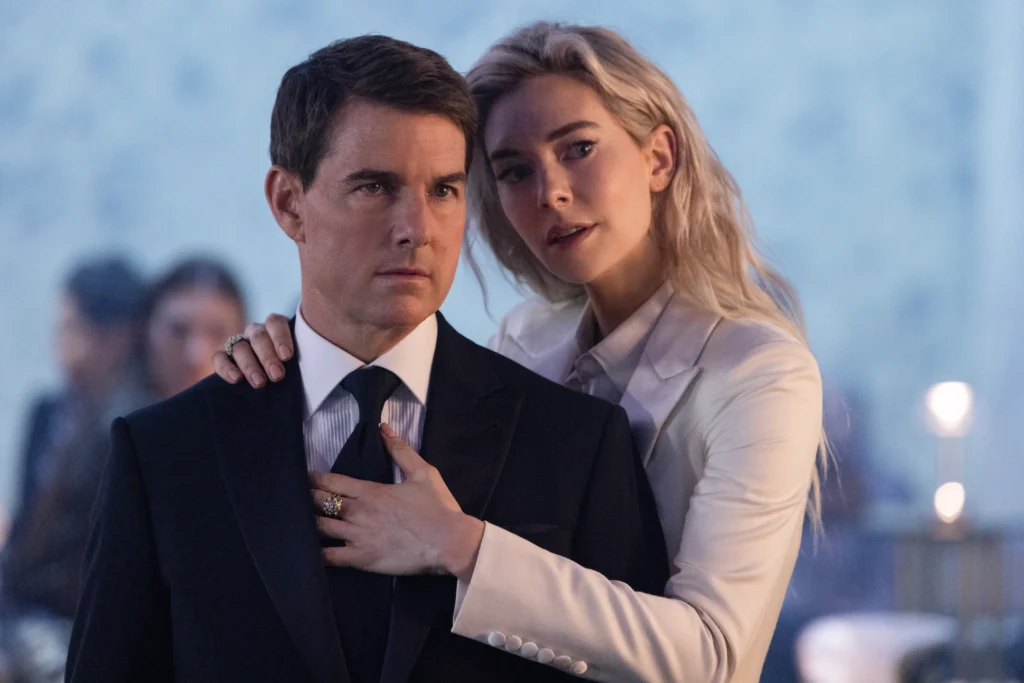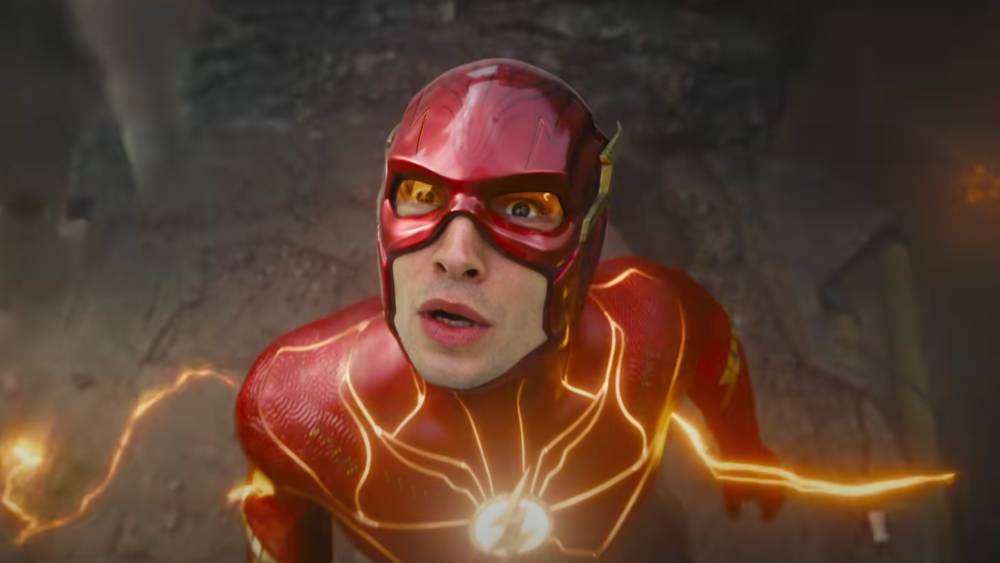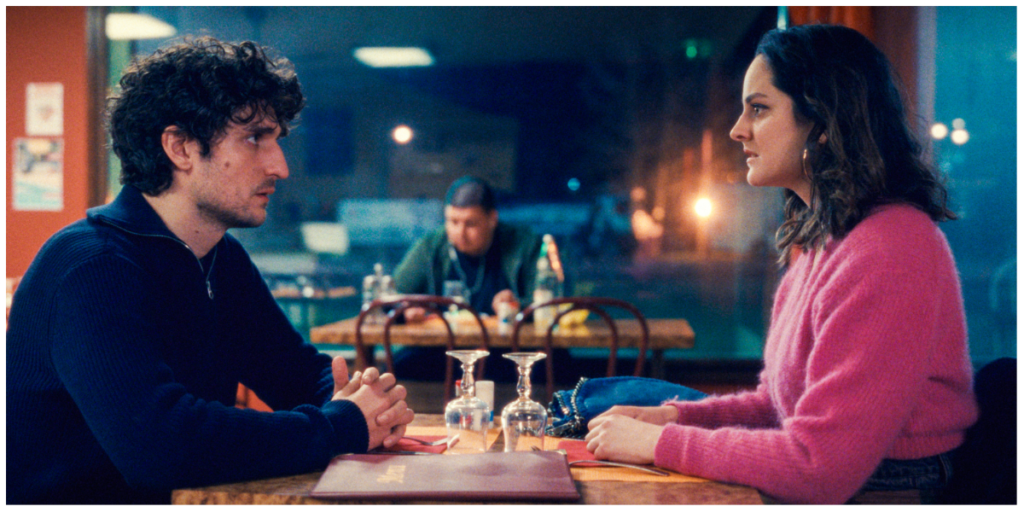Mission: Impossible – Dead Reckoning Part One is popcorn entertainment from a franchise that’s starting to show its age
Written by Ian Thomas Malone, Posted in Blog, Movie Reviews, Pop Culture
There is a certain irony in Tom Cruise’s mission to singularly save cinema, his marquee franchise itself owing its origins to television. Seven entrees in, Mission: Impossible bears little in common to either its 1960s small screen source material or its 1996 cinematic debit. The world itself has less space for the kind of spectacles Cruise likes to stage on the biggest screens possible, many preferring the cozy comforts that the original show provided fifty years ago to the kind of antics that require a trip to the box office. The last few Mission films have sought to up the ante, defying the passage of time itself not just through consumer trends, but the age of Cruise himself.
As its gravity-defying trailers suggest, Mission: Impossible – Dead Reckoning Part One brings all the action that have defined the series since at least its second installment, more carefully refined in the years since Ghost Protocol set the gold standard for blockbuster filmmaking. Ethan Hunt (Cruise) and friends, alongside new ally Grace (Haley Atwell), find themselves pitted against an experimental AI program called “The Entity,” capable of breaching all intelligence and defense networks in the world. Ethan and co battle numerous forces, including an enigmatic figure from his past Gabriel (Esai Morales) for control of a key that controls the computer aboard a sunken Russian submarine.
Director Christopher McQuarrie, in his third outing at the Mission helm, finds a weird balance between the previous two films. Dead Reckoning is tighter than the often-free wheeling Fallout, without the glamour and pizazz of Rogue Nation. The narrative isn’t exactly challenging to follow, but the script is so bogged down with exposition dumps that the audience is perpetually forced to confront its many holes. McQuarrie’s competent craftsmanship is perpetually at odds with the reality that this film isn’t as fun as it could have been, a frantic experience lacking the unadulterated joy of its predecessors.
Cruise’s supporting cast is largely comprised of returning players, including franchise mainstays Luther Stickell (Ving Rhames) and Benji Dunn (Simon Pegg) alongside newer additions Isla Faust (Rebecca Ferguson) and Alanna Mitsopolis (Vanessa Kirby). The weirdest throwback comes in the form of Eugene Kitteridge (Henry Czerny), last seen in the original film, stepping into the role of shady boss more recently occupied by Angela Bassett and Alec Baldwin, neither of whom returned. The bloated roster gives newcomers Morales, Atwell, and Pom Klementieff less time to shine, but the supporting cast does an excellent job working around Cruise, who continues to defy his age as a first-rate Hollywood action hero.
The film’s unwieldy 163-minute runtime is not exactly helped by the Part One in its title, a clunky overstuffed caper that does a lot less with its narrative than earlier entries managed. Dead Reckoning Part One exists in a peculiar space, a first-rate production that makes a strong case for the power of practical effects in the modern era, providing genuine spectacle in every sense of the word. Cruise’s broader mission to save cinema is on full display, a film that rarely pauses to take a breath.
Dead Reckoning Part One is excellent summer entertainment, one of the best cinematic experiences of the season. It is also the first Mission movie in over a decade with absolutely zero claim of superiority to the ones that came before it. To some extent, that might be expected. Cruise, Rhames, and Pegg are all showing their age in a way that hardly rang true the last time around, but the film often feels like it’s running on autopilot going through familiar motions. You can get the sense that the additions of Atwell and Klementieff were at least in part designed to inch the franchise toward a future without Ethan Hunt, despite Cruise’s intentions to continue with the character into his eighties.
The Mission: Impossible franchise has outlived plenty of industry fads over the decades. Part of the key to its success has been its ability to reinvent itself over the years. As its title suggests, there’s still a second half to the story of Dead Reckoning. Part One demonstrates that Mission still has gas left in the tank, but might be in need of a tune-up sooner rather than later.
















